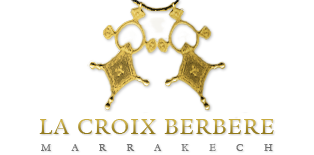From the history of the stones of Marrakech, modern life gives rise to sumptuous guesthouses
With an exceptional geographical location and a rich historical heritage, Morocco is the meeting point between the Eastern, the African and the European worlds. The passing of the Phoenician, Roman and Arab empires have indeed given Morocco the image of tolerance that it still reflects today. Morocco was coveted by European imperialism until its independence in 1956.
Today, the allure that attracts Europeans to the kingdom remains intact, and modern times fortunately bring better behaviours. Thus, a large number of French people have decided to invest in buying a riad near the Djemaa El Fna square for the luckiest ones in Marrakech. Most of these sumptuous houses have been restored and turned into exclusive Marrakech guesthouses. Tourists come from all over the world wish to make a reservation in a riad.
If the infatuation of visitors is so intense, it is mostly due to the enormous historical wealth of the country, which goes far back in time and offers a journey to the heart of voyage.
The first Moroccan dynasty was that of the Idrisids. Moulay Idris took refuge in Morocco in about 786 and founded Walili near Volubilis. This dynasty enjoyed glory during the 8th and 9th centuries. The city of Fez was the capital of Morocco and the construction of the fabulous Al-Qarawiyyin mosque bears witness to the achievements of the period.
Between the 11th and 12th centuries, it was the Almoravids who founded their empire through their leader Youssef ben Tachfine in Marrakech.
After the disappearance of this dynasty in 1147, it was the Almohads who occupied Marrakech under the rule of Mohammed Ibn Toumarte. During this period, Marrakech had the right to its famous Koutoubia mosque, a monument that dominates the city. The Almohads founded an immense empire which nonetheless lasted less than a century. The empire was already in decline in the 13th century and was followed in 1276 by the Marinids, whose capital was Fez and who, through Abu Youssef Yacoub, initiated the construction of several mosques and madrasahs.
Deposed in 1497, this dynasty was replaced by the Wattasid dynasty until 1572, time when the Saadi dynasty established a new empire between the 16th and 17th centuries whose new capital was Marrakech. It was Ahmed El Mansour who built the El Badii palace, a fabulous palace that bears witness to the finesse of the artistic creations of the period. In the 17th century, the country was ruled by Moulay Ismail, of the Alaouite dynasty. Morocco was then reorganised and pacified.
Today, Morocco is experiencing political stability and its capital, Rabat, is a city where every street and monument show the wealth of the country’s past, laden with history. So, let us appreciate present Morocco but let us not forget all the past, which has made Morocco what it is today.
